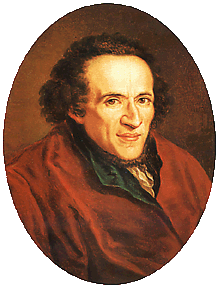Commentators:Moses Mendelssohn/0
< Commentators:Moses Mendelssohn
Jump to navigation
Jump to search
Version as of 12:15, 2 November 2015 by Eddy.Breuer (talk | contribs)
Moses Mendelssohn – Intellectual Profile
This page is a stub.
Please contact us if you would like to assist in its development.
Please contact us if you would like to assist in its development.
 | |
| Name | Moses Mendelssohn, Moses of Dessau משה מנדלסון, משה בן מנדל מדעסוי, רמבמ"ן |
|---|---|
| Dates | 1729-1786 |
| Location | Germany |
| Works | Biur (ed.) |
| Exegetical Characteristics | |
| Influenced by | R. David Frankel |
| Impacted on | |
Background
Life
- Name – Moses Mendelssohn
- Hebrew name – Mosheh ben Mendel
- _ name –
- Dates – 1729-1786
- Location – Dessau, Berlin
- Education – Studied in Dessau under R. David Frankel, the author of Korban Edah to the Talmud Yerushalmi; continued to study with R. Frankel in Berlin, but also studied with R. Yisrael b. Moshe of Zamosc, the author of the commentary Otzar Nehmad to the Kuzari. Virtually all his general education was obtained on his own.
- Occupation – Managed and later was part owner of a silk manufacturing business.
- Family – Married and had six children who survived to adulthood; they were between 5 and 22 years old when he died.
- Teachers – see Education, above
- Students – Mendelssohn was neither a teacher in a formal or informal sense; although many were interested in his ideas, he never referred to them as students.
- Time period – Mendelssohn lived at the time of the Enlightenment, but the German adherents of the Enlightenment with whom he interacted and corresponded were far more moderate than the thinkers associated with the French Enlightenment. The latter were often hostile to religion, whereas almost all the German Aufklärer were Christians who remained deeply committed to their church but sought to enlighten their religion from within.
Works
- Biblical commentaries – Mendelssohn wrote a commentary to Qohelet (1770), and then published Sefer Netivot ha-Shalom, which included his German translation of the entire humash, a Hebrew commentary titled Be'ur, and the Tiqqun Soferim, a masoretic commentary. This humash also included three lengthy introductions; one devoted to defending the masoretic Bible down to the niqqud and te'amim, one on the history of Bible translations, and a third devoted to the principles of translation.
- Jewish thought – He wrote a commentary to Millot ha-Higayon, the treatise on logic attributed to the Rambam.
Torah Commentary
Characteristics
- Verse by verse / Topical –
- Genre –
- Structure –
- Language –
- Peshat and derash –
Methods
- –
Themes
- –
Textual Issues
- Manuscripts –
- Printings –
- Textual layers –
Sources
Significant Influences
- Earlier Sources –
- Teachers –
- Foils –
Occasional Usage
- –
Possible Relationship
- –
Impact
Later exegetes
- –
Supercommentaries
- –